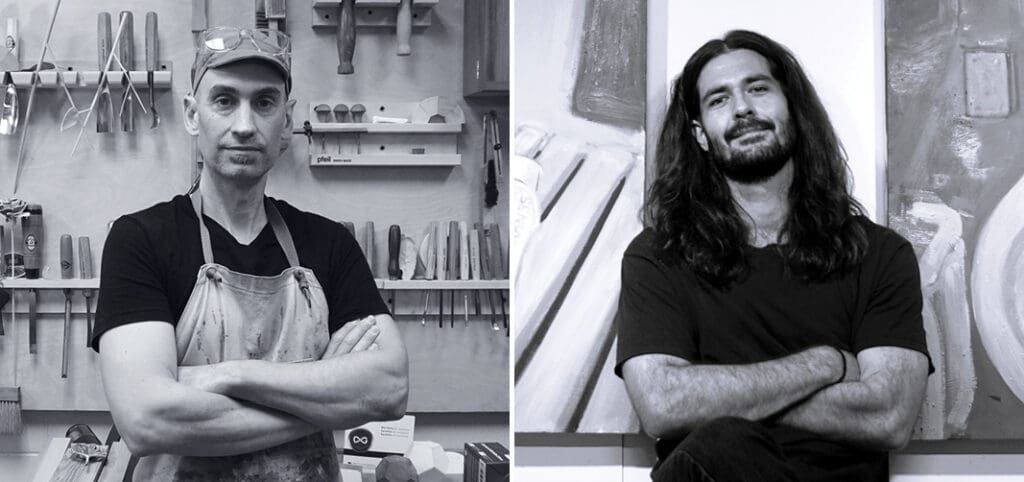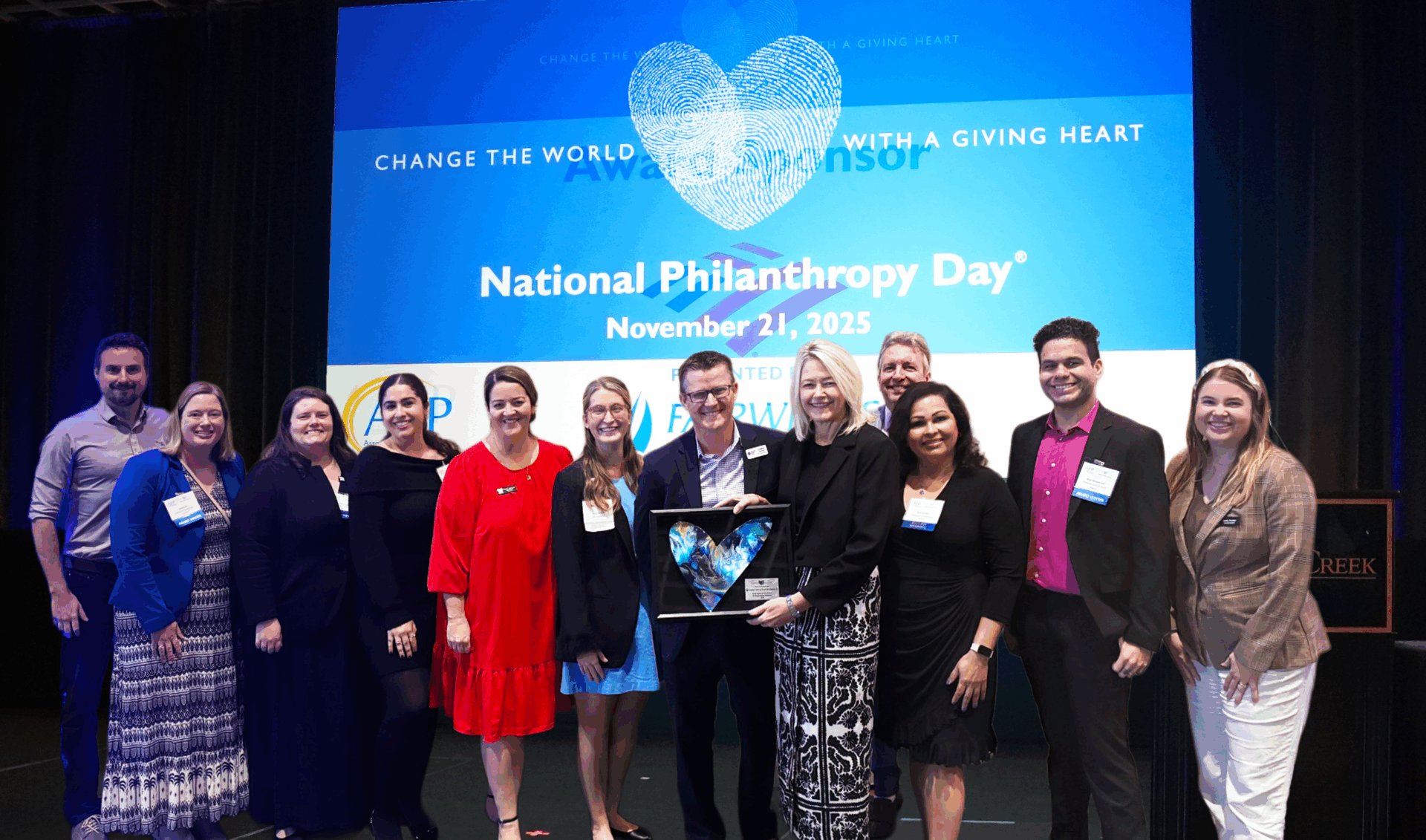Sculptor Bobby Aiosa (left), an assistant professor of studio art at UCF, and painter Anthony Mancuso (right), an art instructor at Valencia College, met when Mancuso was a guest lecturer at UCF. Although their work is different, they view the world through a similar artistic lens. Courtesy Casselberry Arts Center.
Exhibition explores impact of the built environment.
By Patricia Letakis
Liminal space is the uncertain transition between where you’ve been and where you’re going physically, emotionally or metaphorically. To be in a liminal space, which is often unsettling, means to be on the precipice of something new but not quite there yet. In fact, the word “liminal” comes from the Latin word “limen,” which means threshold.
Understanding that term is key to understanding Liminal Space—a new exhibition at the Casselberry Arts Center that explores our built environment and the ways in which designed spaces, public and private, impact our daily lives. It will be on view from September 13 to December 13.
The exhibition is a collaboration between sculptor Bobby Aiosa, an assistant professor of studio art at UCF, and painter Anthony Mancuso, an art instructor at Valencia College, who met when Mancuso was a guest lecturer at UCF.
“We started to connect through conversations about art, life, approaches to teaching, as well as our personal studio practice,” says Mancuso. “Although we make seemingly different things, we really connect through our interest in the subject of space and place.”
Yet, their work could hardly be more different. Aiosa’s site-specific sculptures are constructed from wood, metal and concrete, and reference architecture and historical art movements such as minimalism. He also creates more
organic wood carvings.
Says Aiosa: “I enjoy the contrast of the armature forms that are made in a mechanized manner, where I pay particular attention to the sharp corners and crisp edges, combined with the organic carved forms that celebrate the evidence of process, showing the time it takes for my hand to manipulate a chisel against the wood, leaving the mark, and fully consumed in the moment.”
Mancuso’s art, on the other hand, bursts with color. Working primarily in oil paint, he applies his brush to everything from canvas to paper, plastic, plywood and engineered board such as Masonite.
With a keen eye for more intimate seemingly unremarkable scenes from everyday life, Mancuso says: “I’m interested in what I refer to as ‘in-between moments.’ I paint what I know and what’s most familiar to me. I find comfort in these familiar scenes from my life. Piles of dirty laundry, sinks full of dirty dishes, evidence of life lived in these spaces—things that define the meaning of home.”
To engage people even more, the center will offer artist talks with Aiosa and Mancuso. “I’m trying to reach a broader audience and bring in new people with different types of art that haven’t been shown before in Casselberry,” says Justin Luper, the city’s art and marketing supervisor.
The Casselberry Arts Center is located at 137 Quail Pond Circle, Casselberry. For more information, call 407.262.7700 or visit casselberry.org.



